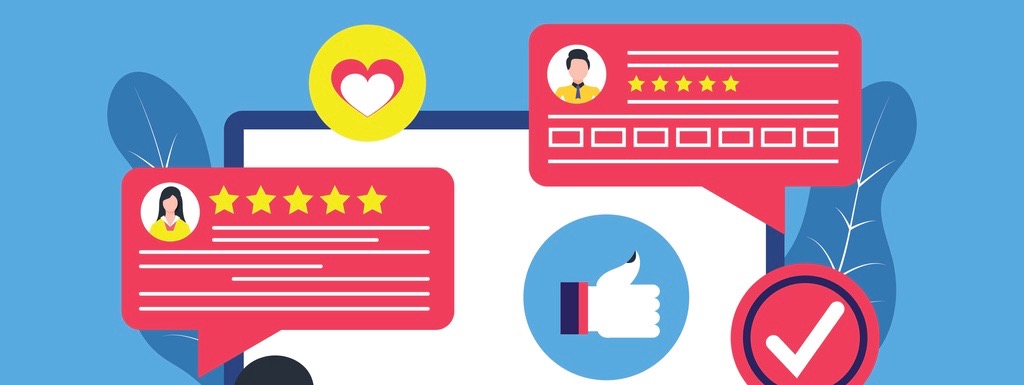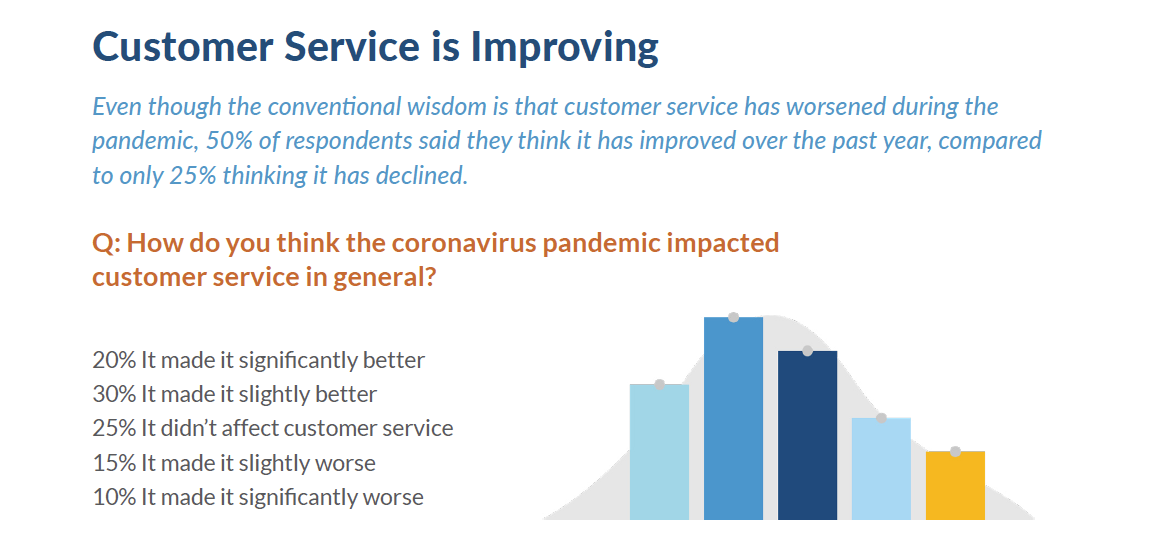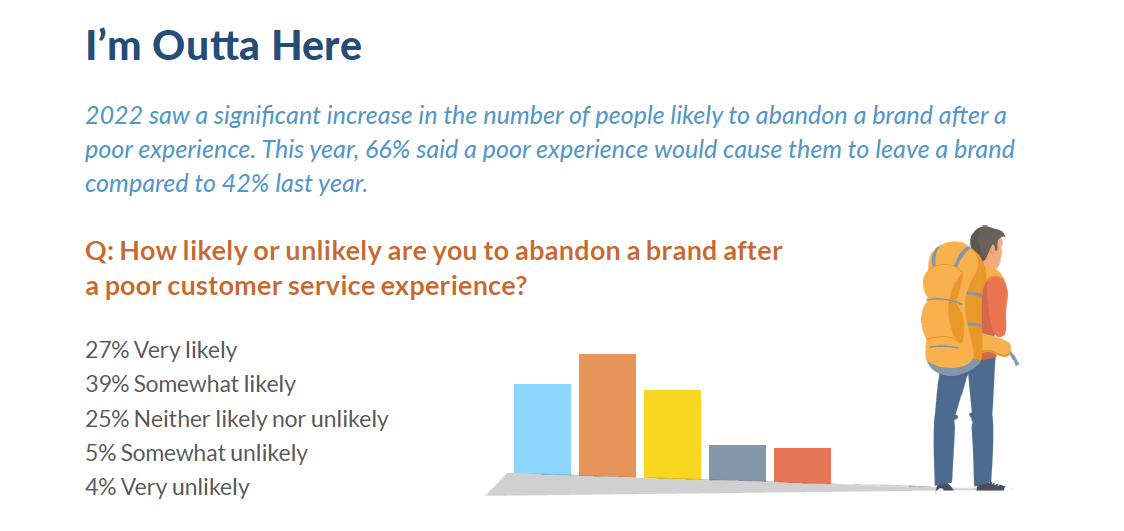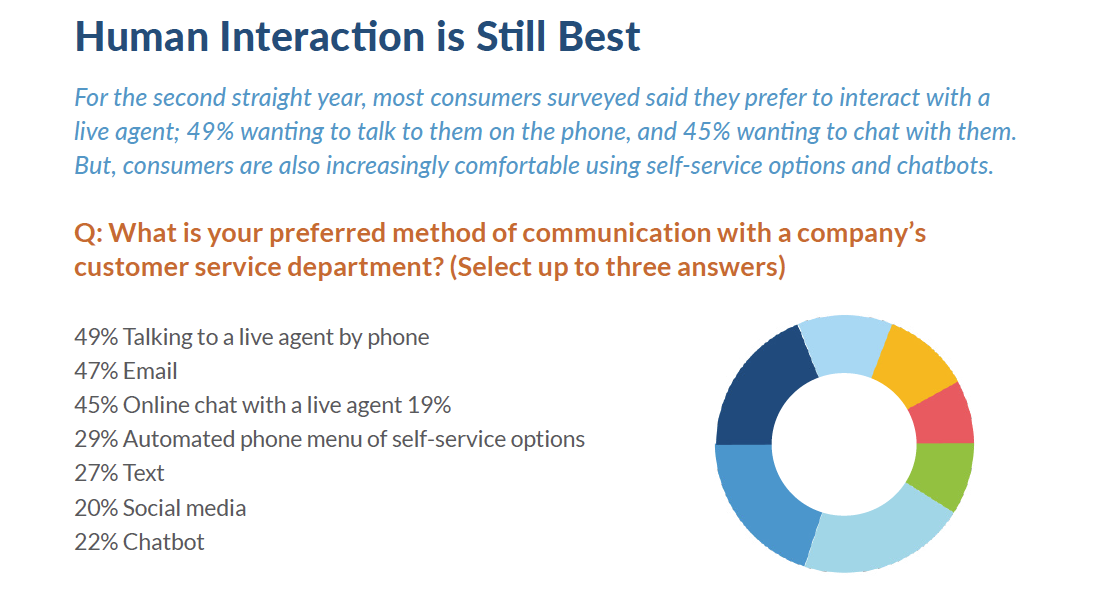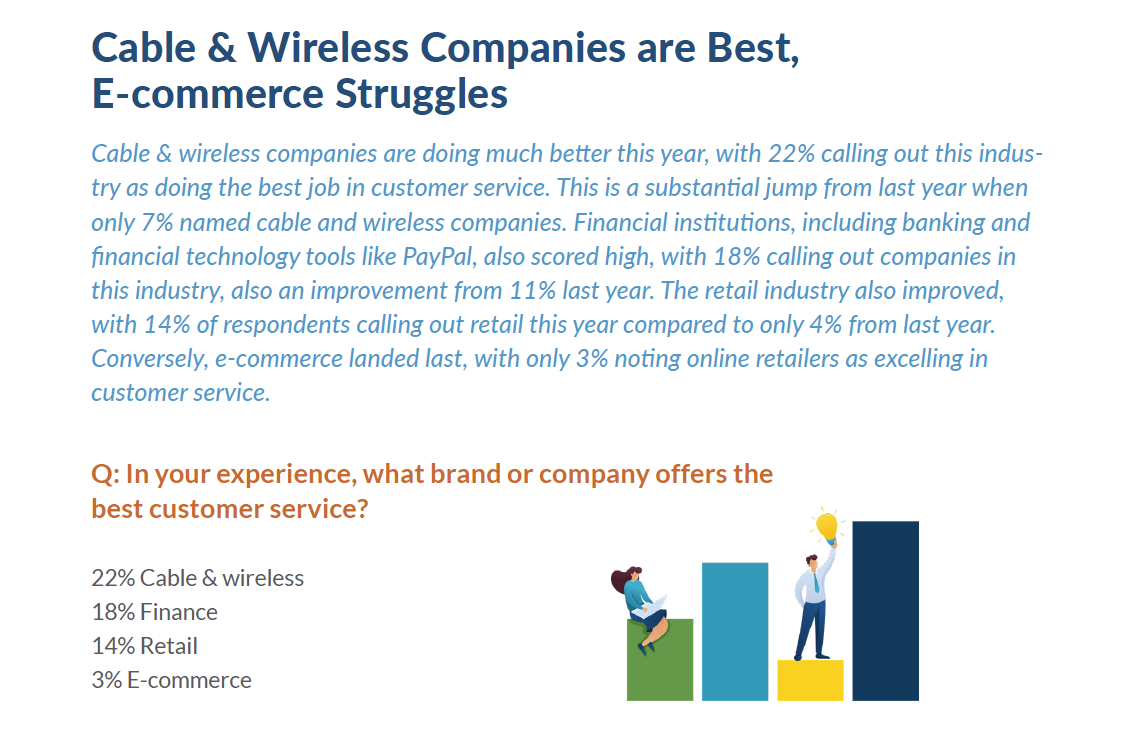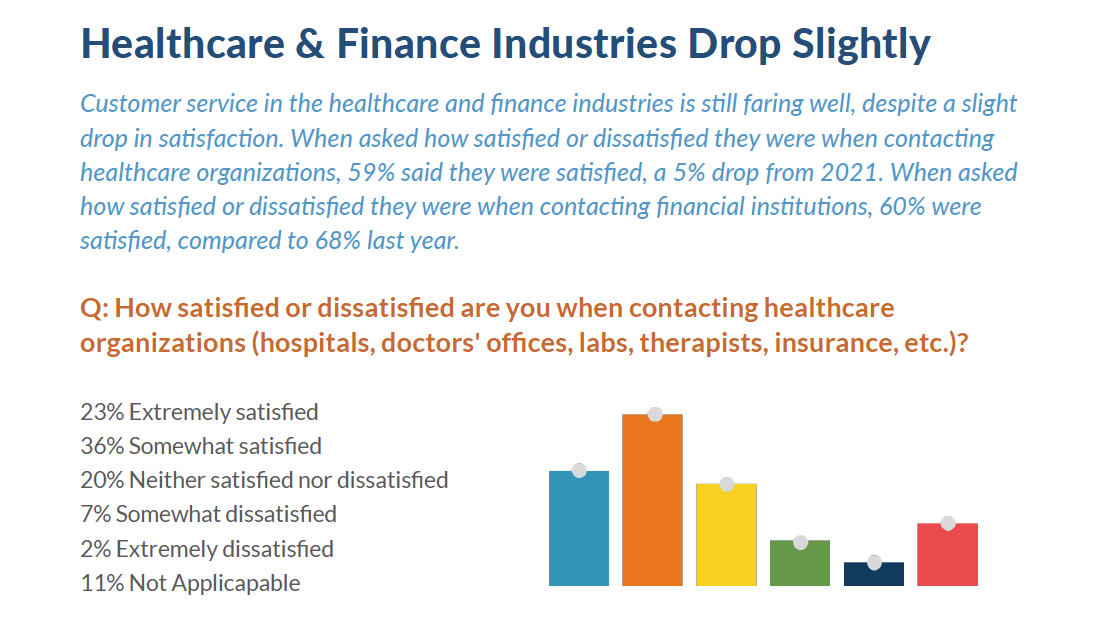Americans are very likely to abandon a brand after a poor customer service experience, affirms a new research report from cloud-based call center platform TCN—on the other hand, they are also very likely to recommend a brand after a positive experience. But even despite the labor shortage the country has been experiencing over the past two years, customer service seems to have improved overall in the eyes of the consumer.
Consumers’ desire to speak to a human has not changed, finds the firm’s second annual Consumer Insights about Customer Service survey, conducted by OnePoll. When asked their top three preferred methods of communication with a company’s customer service department, the most chosen answer again this year was “talking to a live agent by phone,” with 49 percent of respondents listing this option. Not far behind this option at 45 percent was “online chat with a live agent.” This result clearly indicates that although technology can play a critical role in customer service, it should remain part of a larger strategy that still includes the human touch.
Fool me once …
According to the survey, 66 percent of Americans are likely to abandon a brand after a poor customer service experience. This is a significant jump compared to only 42 percent in the 2021 survey. When asked how likely they were to abandon a brand after poor experiences, 27 percent said “very likely,” up from 16 percent last year, and 39 percent said “somewhat likely,” up from 25 percent last year. On the flip side, only 4 percent responded that they were very unlikely to abandon a brand this year, a sizeable drop from 20 percent in 2021.
Scream it from the rooftops
Leaving customers with a smile at the end of a call can go a long way for referrals: 71 percent of Americans are likely to endorse a brand when they have a positive encounter. When asked how likely they are to recommend a brand after a great customer service experience, 35 percent said “very likely,” and 36 percent said “somewhat likely.” Conversely, only 7 percent said they are unlikely to recommend a brand after such an experience, so the chances of being advocated for are in favor of the brand.
Doing more with less
It is no secret that many companies are trying their best to get by with fewer employees, and this trend of doing more with less is not expected to change anytime soon. According to the Bureau of Labor Statistics, the projected average growth rate for all occupations from 2020 – 2030 is 8 percent, but when looking at customer service specifically, the estimated growth is actually -1 percent. Even so, customer service does seem to be improving in the eyes of consumers. According to the survey, half of Americans believe the coronavirus pandemic has positively impacted customer service. When asked how they think the pandemic impacted customer service in general, 20 percent responded “it made it significantly better;” 30 percent said “it made it slightly better;” and only 25 percent believe it has gotten worse, while 25 percent stated that they saw no effect.
Other key findings include:
- I’m telling everyone: When asked if they have ever posted an online review about a poor customer service experience with a company, 50 percent said “yes,” up from 42 percent in 2021. The responses remained consistent across all age groups.
- Buy from this brand: On the other hand, 55 percent of consumers stated that they had posted an online review about a great customer service experience. Last year, only 33 percent said they had posted positive reviews.
- We apologize for the delay: No one likes waiting on hold, but how long is too long? The average hold time in the 2022 survey was 14.6 minutes, which was down 16 percent from last year’s average of 17.4 minutes. When asked the longest they have been on hold when calling a company’s customer service department, 26 percent said “6-10 minutes;” 25 percent said “11-15 minutes;” and only 11 percent said “31 minutes or longer” compared to 23 percent selecting this option last year.
- Most improved, cable & wireless: When asked which companies offer the best customer service, the industry that was named the most often was cable & wireless, with 22 percent of respondents calling these brands out. This is a significant improvement from last year when only 7 percent of consumers chose companies in this industry.
- May I ask who’s calling: Either people are becoming more trusting of anti-spam regulations, or they just want to speak to someone: 47 percent of respondents stated that they are likely to answer a call from an unknown number in this year’s survey compared to only 42 percent last year. On the flip side, only 33 percent are unlikely to pick up the call, much less than the 50 percent in 2021 who would rather hit the side button.
- Scam likely: Despite many regulations being put into place to reduce the number of spam calls consumers receive, Americans feel they are receiving more calls from unknown numbers. When asked how many calls on average they typically receive in a week from unknown numbers, this year’s average number was 9.2, compared to 8.6 last year.
- Incoming call, again: When looking at the stats above, it is no surprise that 61 percent of consumers stated they are receiving more calls from unknown numbers over the past year.
- Press 1 to hear your balance: Overall, consumers are satisfied with self-service options in many instances. When asked how satisfied or dissatisfied they are when using a self-service option, 65 percent said they are either “extremely satisfied” or “somewhat satisfied,” while only 12 percent stated dissatisfaction.
- Click here to chat: Chatbots are becoming more intelligent and, in turn, resolving many customer service issues without the need to introduce a live agent: 55 percent of consumers said they are satisfied when using online chatbots to resolve a customer service issue.
- Healthcare & finance dropping slightly: Customer service in the healthcare and finance industries is still faring well, despite a slight drop in satisfaction. When asked how satisfied or dissatisfied they were when contacting healthcare organizations, 59 percent were satisfied, a 5 percent drop from 64 percent stating satisfaction in 2021. When asked how satisfied or dissatisfied they were when contacting financial institutions, 60 percent were satisfied compared to 68 percent last year.
- How can i help you: An agent’s ability to solve a customer’s issue is critical, especially for the 52 percent of consumers who chose this as a top-three quality of a customer service agent. Equally important is getting the customer through to the right agent; when asked what is most important when contacting a company’s customer service department, 48 percent chose “easy to get through to a live agent.”
- Call dropped: Along with positive experiences dealing with customer service departments, some situations can also bring frustrations. When asked what best describes the biggest frustration(s) when calling a company’s customer service department for the second year in a row, the most chosen answer was “waiting on hold for a long time and then getting disconnected and having to start all over again.” 50 percent of respondents chose this answer this year, a slight drop from 68 percent in 2021, but still the most common response.
“This year’s survey reveals some interesting insights into the progress that contact centers have made in their customer service engagements with customers. The results really drive home the importance of positive customer service and its significant impact on brand loyalty,” said McKay Bird, marketing director at TCN, in a news release. “When comparing the 2022 results to 2021, we are happy to see improvements in many areas such as reduced wait times, and major industries like cable & wireless improving overall customer satisfaction. Other major industries like healthcare and finance appear to be doing well; however, it will be critical to continue providing a wide variety of contact options for their customers to keep them happy.”
Download the full report here.
Commissioned by TCN, the 2022 “Consumer Insights About Customer Service” survey was conducted by OnePoll, a marketing research company specializing in online quantitative research and polling, between May 12-16, 2022. Feedback was obtained from 1,000 U.S. adults.

